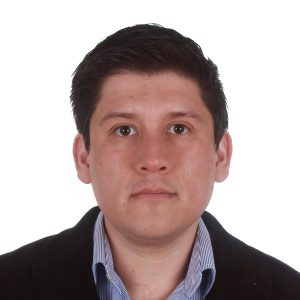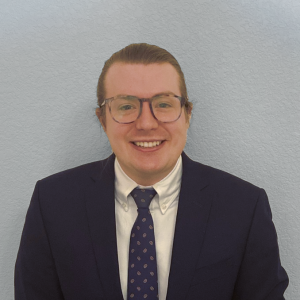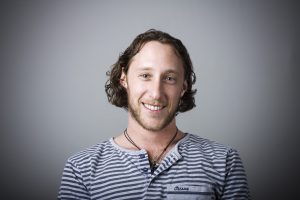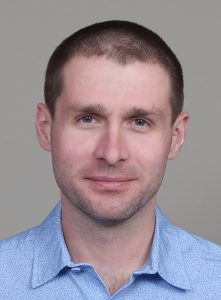Positions
- (2023-Present) Monfort Professor, Colorado State University, Fort Collins CO
- (2020-Present) Associate Professor; Chemical and Biological Engineering; Colorado State University, Fort Collins CO
- (2014-2020) Assistant Professor; Chemical and Biological Engineering; Colorado State University, Fort Collins CO
- (2014-Present) Affiliate Professor; School of Biomedical Engineering; Colorado State University, Fort Collins CO
- (2016-Present) Keck Scholar; Colorado State University, Fort Collins CO
- (2010-Present) Director of the q-bio Summer School
- (2010-2016) Research Scientist; New Mexico Consortium; Los Alamos NM
- (2013); Scientist II, Los Alamos National Laboratory; Los Alamos, NM
- (2010-2013); Richard P Feynman Distinguished Postdoctoral Fellow in Theory and Computing; Los Alamos National Laboratory; Los Alamos, NM
- (2008-2010); Director’s Postdoctoral Fellow; Los Alamos National Laboratory; Los Alamos, NM
Education
- Munsky_CV_2022
- B.S. (2000) Aerospace Engineering, Penn State
- M.S. (2002) Aerospace Engineering, Penn State
- Ph.D. (2008) Mechanical Engineering, UC-Santa Barbara [Dissertation (.pdf)]
Funding
- Monfort Professor, “The Cyborg Scientist to Observe, Model, and Predict Cellular Dynamics”, 2023-2025.
- NSF CAREER Award, “Stochastic Analyses to Optimize Designs for Single-Cell Optical Microscopy Experiments,” 2020-2025.
- NIGMS Maximizing investigator Research Award (MIRA, R35): “Using Cellular Fluctuations and Computational Analyses to Probe Biological Mechanisms,” Sponsored by HHS-NIH-National Institutes of Health (September 15, 2017 – August 31, 2027). PI.
- DTRA “Bet-hedging in Pathogens: Targeting Bacterial Persistence to Combat Infectious Disease,” Sponsored by DOE-NNSA-Los Alamos National Laboratory. (January 17, 2017 – December 31, 2017), co-I.
- W. M. Keck Foundation Medical Research Area Grant, “Quantifying Multiplexed Real-Time RNA to Protein Translation in Live Cells”, (July 1, 2016 – June 30, 2020), co-PI.
- NIH R25, “The q-bio Summer School”, (Jan. 01 2012 – Dec. 31, 2016), co-PI.
- NSF/I2CAM Workshop Support Award ($25,000 in support), 2011, PI.
Awards
- Monfort Professorship, 2023
- NSF CAREER Award, 2020
- George T. Abell Outstanding Early Career Faculty Award, 2019
- WM Keck Foundation, 2016
- Los Alamos National Laboratory Postdoctoral Distinguished Performance award, 2012
- SIAM Conference in the Life Sciences (LS10) Poster Award, 2010
- Leon Heller Postdoctoral Publication Prize in Theoretical Physics, 2010
- Richard P. Feynman Distinguished Postdoctoral Fellowship, 2010
- UCSB Department of Mechanical Engineering Best Ph.D. Dissertation for the 2007-2008 Academic Year, 2009
- Los Alamos National Laboratory Directors Postdoctoral Fellowship, 2008
- Best Presentation in Session, 27th American Controls Conference, 2008
- UCSB Student Travel Grant, 2007
- UCSB Department of Mechanical Engineering Graduate Research Fellowship, 2003
- UCSB Chancellor’s Graduate Research Fellowship, 2003
- National Defense Science and Engineering Graduate Fellowship, 2001
- American Helicopter Society Vertical Flight Foundation Award, 1999 and 2000
- Penn State University Schreyer Ambassador Travel Grant, 1999
- Mary Ilgen Memorial Scholarship, 1999
- Schreyer Honors College Academic Excellence Award, 1996
Dr. Luis Aguilera (Research Scientist II)
Luis Aguilera

I am a postdoc in the group of Dr. Brian Munsky at CSU. The focus of my work is to develop high-throughput computational techniques to understand complex biological systems, such as viral infections and innate immune responses. I obtained my Ph.D. in Biomedical Engineering and Physics from the National Polytechnic Institute in Mexico.
Email: Luis.aguilera at colostate.edu
Publications:
- Aguilera LU, Galindo BE, Sánchez D & Santillán M (2012) What is the core oscillator in the speract- activated pathway of the Strongylocentrotus purpuratus sperm flagellum? Biophysical Journal 102: 2481– 2488.
- Aguilera LU & Rodríguez-González J (2014) Studying HIV latency by modeling the interaction between HIV proteins and the innate immune response. Journal of Theoretical Biology 360: 67–77.
- Aguilera LU, Zimmer C, Kummer U (2017). A New Efficient Approach to Fit Stochastic Models on the Basis of High-throughput Experimental Data Using a Model of IRF7 Gene Expression as Case Study. BMC Systems Biology. 11:26.
- Aguilera, LU, Rodríguez-González, J. (2019). Modeling the effect of tat inhibitors on HIV latency. Journal of theoretical biology, 473, 20-27.
- Lyon, K., Aguilera, LU, Morisaki, T., Munsky, B., Stasevich, T. J. (2019). Live-cell single RNA imaging reveals bursts of translational frameshifting. Molecular cell.
- Aguilera, LU, Bergmann, F. T., Dalmasso, G., Elmas, S., Elsässer, T., Großeholz, R., …, Veith, N. (2019). Robustness of frequency vs. amplitude coding of calcium oscillations during changing temperatures. Biophysical chemistry, 245, 17-24.
- Aguilera, L., Raymond, W., Fox, Z. R., May, M. P., Djokic, E., Morisaki, T., Stasevich T.J., Munsky, B. (2019). Computational design and interpretation of live-cell, single-RNA translation experiments. PLoS Computational Biology 15 (10).
- Koch A., Aguilera L., Morisaki T., Munsky B., Stasevich T.J. (2020). Quantifying the dynamics of IRES and cap translation with single-molecule resolution in live cells. Nature Structural and Molecular Biology.
- Castaño-Arcila, Mauricio, Aguilera L., and Jesús Rodríguez-González. (2021). Modeling the intracellular dynamics of the dengue viral infection and the innate immune response. Journal of Theoretical Biology. 509:110529.
Alex Popinga

Alex is a postdoc in the Munsky Group. She completed her undergraduate degrees in bioinformatics and biology, with a minor in chemistry. During this time, she did honors research in the molecular biology/genetics lab to study coevolution for pocket gophers and parasitic chewing lice by using computational approaches such as phylogenetic inference. Through this, she was interested in the modeling and statistics involved, so she studied that for her PhD at the University of Auckland, known for their strong Bayesian phylogenetic inference group. At this time, she branched out into the central dogma of biology and did stochastic simulations for phylogenetic inferences, leading to her interest in the Munsky Group. Her hobbies include rock climbing, music, and open-world exploration games.
Publications:
- Inferring Epidemiological Dynamics with Bayesian Coalescent Inference: The Merits of Deterministic and Stochastic Models https://doi.org/10.1534/genetics.114.172791
- Bayesian inference of the climbing grade scale https://arxiv.org/abs/2111.08140
- Multidimensional phylogenetic metrics identify Class I aminoacyl-tRNA synthetase evolutionary mosaicity and inter-modular coupling.” https://doi.org/ 10.3390/ijms23031520
Conferences:
- Popinga and R. Bouckaert and P. Wills, (2019). “Aminoacyl-tRNA synthetases: Protein structures and the dawn of the genetic code.” Quantitative and Computational Chemistry Student Conference, Kioloa.
- Popinga and R. Bouckaert and P. Wills, (2018). “A new model of amino acid substitution using iteratively added exchangeability rates to improve phylogenetic inference of aminoacyl-tRNA synthetases.” Te Ao Marama (Centre for Fundamental Inquiry) Meeting, Auckland
- Popinga and P. Wills, (2016). “The search for simple systems: Minimal genetic information and autocatalytic sets.” New Zealand Astrobiology Workshop, Kaikoura
William Raymond (Ph.D. Student)
Will Raymond

I am a computational biologist with a background in quantitative data analysis, mechanistic model building, and RNA biology. I recently completed my PhD at Colorado State University in the Munsky lab. My focus during my studies here have been on coding TASEP based mRNA models to fit, reproduce, and classify Nascent Chain Tracking (NCT) experiments. I have a deep interest in the questions that plague RNA biology. I hope to provide insight to the scientific community about mRNA dynamics such as ribosomal collision dynamics, mRNA codon selection, mRNA decay, and tRNA abundances during my upcoming career.
Besides RNA, I am passionate about ethics in machine learning, as well as in scientific research as a whole. I haven’t had the chance to do scientific outreach past college level, but I hope to change that in the future!
When I am not working, I love to spend afternoons painting, swimming, or hiking with my partner. Feel free to reach out, I will be fastest to respond over email!
Email: wsraymon@rams.colostate.edu / williamscottraymond@gmail.com
Publications:
- L. Forero, W. Raymond, T. Handa, M. Saxton, T. Morisaki, B. Munsky, T. Stasevich. (2021) Live-cell imaging reveals the spatiotemporal organization of endogenous RNA polymerase II phosphorylation at a single gene. Nature Communications – Accepted for publication
- L. Aguilera, W. Raymond, Z. Fox, M. May, E. Djokic, T. Morisaki, T. Stasevich, B. Munsky. (2019) Computational design and interpretation of single-RNA translation experiments. PLOS Computational Biology. 15(10): e1007425. https://doi.org/10.1371/journal.pcbi.1007425
- L. Weber, W. Raymond, and B. Munsky. (2018) Identification of gene regulation models from single-cell data. Physical Biology, 15 (5), 055001. https://doi.org/10.1088/1478-3975/aabc31
- L. Weber, W. Raymond, and B. Munsky, “Tutorial on the Identification of Gene Regulation Models from Single-Cell Data,” in Quantitative Biology: Theory, Computational Methods, and Models, B. Munsky, W. S. Hlavacek, and L. S. Tsimring, Ed. Cambridge, MA: The MIT Press, 2018, pp. 599-616.
Eric Ron

Hi everyone, I’m Eric Ron, a 4th-year PhD student in the Munsky Group. I received my undergraduate degree in biochemistry from Colorado State University in 2013. Afterward, I worked as an analytical chemist for two years in industry before becoming the product development lead and co-founder of a start-up company until 2018. Currently, I am working on single-cell microscopy, the integration of stochastic models with transcription and translation dynamics, and their applications in understanding inflammation and immunology. When I’m not in the lab, I love mountain biking, camping, and skiing.
Email: Eric.Ron@colostate.edu
Jack Forman
Jack is a PhD student who completed his undergraduate degree in chemical and biological engineering at CSU. His first lab experience was at ASU with Dr. Douglas Lake to work with patients to study sterilizing immunity post-vaccination for COVID-19. Through this, the group was able to make recommendations to the CDC. After returning to CSU, Jack worked with Dr. Soham Ghosh to research epigenetics related to cell migration during wound healing. With starting his PhD, he also started working in the Munsky Group, allowing him to do both experiments and math together. Outside of the lab, he likes to do climbing and mountain biking.
Dmitri Svetlov

I received my undergraduate degree in chemistry and philosophy, with a certificate in computer sciences, from UW-Madison in 2014. After graduate coursework and a brief professional research appointment in chemistry, I worked for five years as a software developer at De Novo Software, makers of leading products for the analysis and visualization of flow cytometry data. Throughout this period, I continued my involvement in scientific research, occasionally at the bench but more frequently in hypothesis development and technical communication.
In the Munsky group, my work has two major aims:
- Improving our stochastic system modelling tools and applying them to new scientific problems, e.g. probing the dynamics of catalyzed nanoparticle assembly and optimal design of field experiments to better understand disease spread.
- Developing our automated microscope as a cyber-physical system, validating it using formal methods, and extending its capabilities through additional hardware, e.g. FPGAs, and hardware/software co-design.
Email: Dmitri.Svetlov@colostate.edu
GitHub: dmitrisvetlov
Alex David
My name’s Alex David, a rising 5th-year Undergraduate in the Munsky Group. I previously worked in the Peebles lab conducting genetic transformation experiments to construct plasmid vectors equipped with promoter regions and fluorescent protein tags, focusing on achieving successful plasmid replication in bacteria. Currently, I assist with single-cell microscopy and data collection, focusing on visualizing and quantifying the spatial distribution and abundance of RNA molecules within individual cells. In my free time, I enjoy playing guitar and hockey.
Isabelle Lemma (Undergraduate)
Isabelle Lemma
 I’m Isabelle, a 5th year undergraduate student double majoring in chemical and biological engineering and biomedical engineering. In my first year I was part of the SURE program in Dr. Ghosh’s lab looking at how oxidative stress affects mesenchymal stem cells. In the Munsky lab, I’m working with the microscope project to help with coding particularly related to image processing. I also help ensure that the microscope collects and processes data required for everyone’s experiments. Outside of school and the lab, I like watching movies, playing video games, and crocheting.
I’m Isabelle, a 5th year undergraduate student double majoring in chemical and biological engineering and biomedical engineering. In my first year I was part of the SURE program in Dr. Ghosh’s lab looking at how oxidative stress affects mesenchymal stem cells. In the Munsky lab, I’m working with the microscope project to help with coding particularly related to image processing. I also help ensure that the microscope collects and processes data required for everyone’s experiments. Outside of school and the lab, I like watching movies, playing video games, and crocheting.
Former Undergraduate Team Members
- Joshua Cook (B.S. in Chemical & Biological Engineering and Biomedical Engineering, May 2021). Now a Research Associate at CSU.
- Sawyer Halingstad, (B.S. in Chemical & Biological Engineering and Biomedical Engineering, May 2023). Now a Renewable Energy Researcher at the National Renewable Energy Laboratory.
- Alison Shad, (B.S. in Chemical & Biological Engineering and Biomedical Engineering, May 2023). Now a Ph.D. Student at Stanford University.
- Katie Davis, (B.S. in Chemical & Biological Engineering and Biomedical Engineering, May 2021). Now a Process Development Engineer at Tolmar Inc.
- Rachel Keating, (B.S. in Chemical & Biological Engineering and Biomedical Engineering, May 2021). Now a Systems Engineer II at Abbott.
- Stuart McKnight (B.S. in Chemical & Biological Engineering and Biomedical Engineering, May 2021). Now a Systems Engineer Terumo Blood and Cell Technologies.
- Elliot Djokic, Undergraduate, Chemical and Biological Engineering and Biomedical Engineering (Dual B.S. Degrees, 2020). Now a Systems Engineer at Epic.
- Charis Ellis, Undergraduate, Chemical and Biological Engineering (B.S., 2019). Now a CVD Shift Process Engineer at Micron Technology, Inc.
- Zach Haigh, Undergraduate, Chemical and Biological Engineering and Biomedical Engineering (Dual B.S. Degrees, 2020). Now a Ph.D. student at University of Minnesota.
- Chase Hunter, Undergraduate, Chemical and Biological Engineering (B.S., 2017). Now a RDA Engineering Manager at 3D DRAM.
- Torin Moore, Undergraduate, Chemical and Biological Engineering and Biomedical Engineering (Dual B.S. Degrees, 2020).
- Charlotte Mitchell, Undergraduate, Chemical and Biological Engineering and Biomedical Engineering (Dual B.S. Degrees, 2017). Now a Global Strategist at Raytheon.
- Lucas Suazo, Undergraduate, Chemical and Biological Engineering and Biomedical Engineering (Dual B.S. Degrees, 2016). Now at Stanford Medical School.
Former Graduate Team Members
- Lisa Weber, (Ph.D., 2024), Now an Adjunct Assistant Professor at Colorado State University
- Michael May, (Ph.D., 2023), Now a Graduate Research Assistant at Colorado State University
- Joshua Cook, (M.S., 2023), Now a Research Associate at Colorado State University
- Zachary Fox (Ph.D., 2019), Now a Research Scientist at Oak Ridge National Laboratory.
- Mohammad Tanhaemami (M.S., 2020), Now a Bioinformatics Analyst at Dana Farber Cancer Institute.
- Jaron Thompson (M.S., 2020), Now a Ph.D. Student in Chemical and Biological Engineering at University of Wisconsin, Madison.
Former Postdocs
- Douglas Shepherd, Postdoc, Now Assistant Professor of Physics at Arizona State University
- Huy Vo, Postdoc, Now a Research Investigator at Bristol Meyer Squibb.
- Linda Forero Quintero, Postdoc, Now a Research Scientist II at Mosaic Biosciences